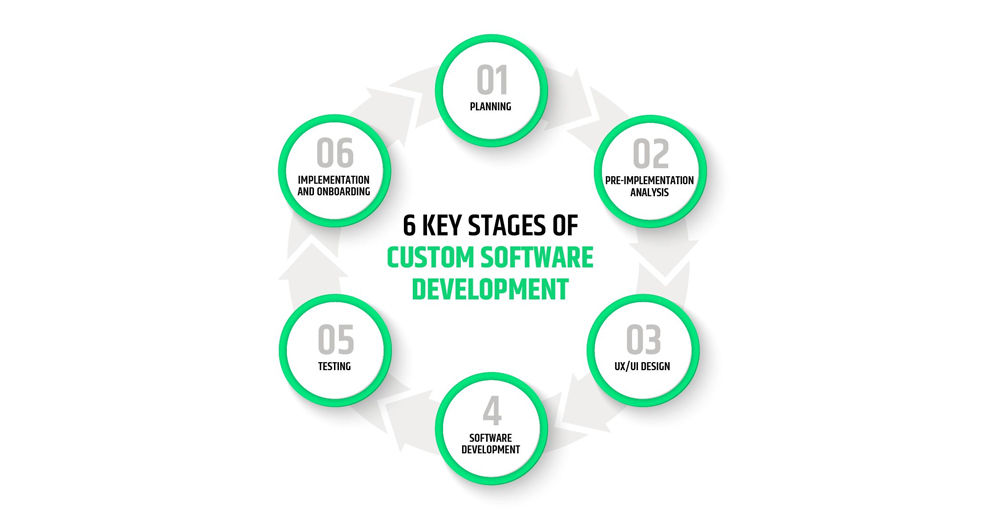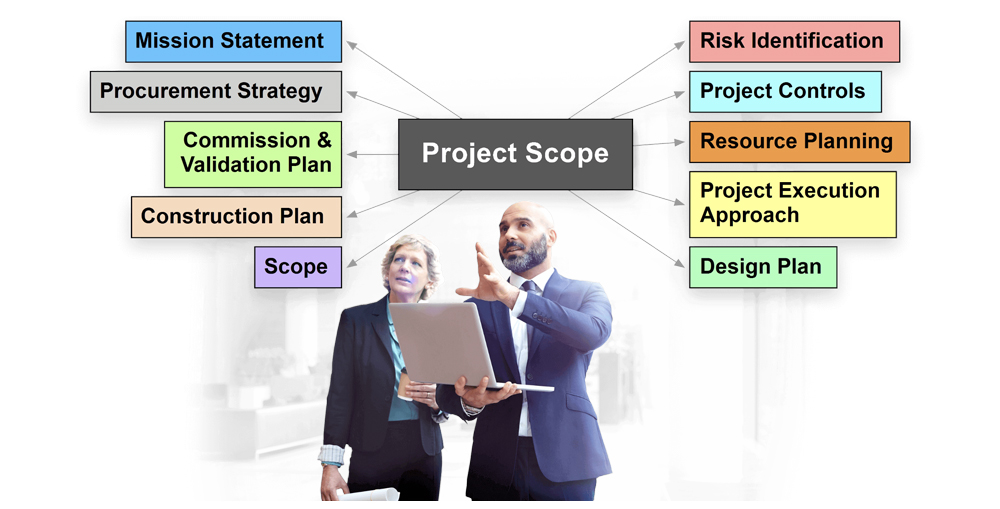In the today’s technology driven world, the businesses are dependent on software solutions more than ever before. Especially in competitive markets like Dubai, Sharjah, Abu Dhabi and other cities of UAE where the customers are also very demanding and tech savvy the software solutions have become absolutely essential to ensure greater operational efficiency, productivity and performance of the entire business. Where the integration of technology become deeper and raise new needs for software solutions, the custom software development industry have also evolved in UAE. Once software tools thought to be meant for high-value and large-scale enterprises are now in the reach of a startup, thanks to the advancements in the software development tools and technologies, now a days, building a great software solution is not a luxury anymore. Every business can build software tools to drive performance and productivity which can gain them the much needed competitive advantage and help them stand out of the crowd. The commercial off-the-shelf software solutions more often doesn’t fulfill all the needs, hence businesses are turning to custom software development. The custom software development not only offer exclusive solutions and tools that perfectly aligns with business needs but it also tend to offer better ROI in longer run. In this blog we will go through a step-by-step guide to planning and executing your custom software development project which can drive efficiency, improve workflows and processes and enhance customer experience for your business.

Why do You Need a Custom Software Development Project Plan?
When it comes to deploy a new software solution your project goals could fall in any of the three, operational improvements, customer experience improvement or improved management process and workflows. When it comes to the commercial off-the-shelf software solutions is relatively easier to carry out market research, done a competitive analysis and chose the right tool or solution as per your needs. However, when it comes to developing a custom software, the businesses must have to do in-depth analysis, research and due diligence to ensure the final product will fulfill their needs. Since comparing two or more existing products is easier, you can simply signup for trials or have demos to compete COTS, however, in case of custom software development, there is no product hence your project plan will help transforming your software requirements into a fully functional software solutions. That is why a proper and comprehensive project plan is absolutely essential.
See Also: Comparison between COTS and Custom Software Development
Your project plan will help you understand the following very basic questions that will help you effectively executing your custom software development project:
- What technology or tools you will be needing to develop your custom software?
- Which department is the project owner and who are the main stakeholders?
- Who will be managing the software and who will be the primary users of the software?
- What skillset and resources do you need in your team?
- What external resources you will be needing?
- What your success will look like? What are your success criterions?
- How much time is required to develop your custom software solution?
- What is your budget limitations? What is the estimated cost including all assumption (if any) you are making to estimate the cost of your custom software solution?
These are just a few questions that will help you align your project with your timelines and budgetary limitations. A project plan for your custom software development project will mainly cover, requirement analysis, ideation, concept, development process, testing and deployment, post-launch processes and obviously documentation. Everything has to be documented properly to ensure an effective and successful project execution.
See Also: Top Trends in Custom Software Development: What’s Shaping the Industry?

How to Setup a Successful Plan for your Custom Software Development Project?
A successful project plan is essential for a successful custom software development project. It is important to understand that a business have to invest a lot of resources, efforts and time to develop a custom software therefore the stakes are very high and businesses must have to make sure that the final product resonates perfectly with the set success factors. Businesses often doesn’t pay much attention to the planning phase, overlooking its importance, which lead to unsuccessful custom software development projects and result in loss of a lot of resources, time and money. Here is a step-by-step guide to planning your customer software development which will raise your success probability to 100% if the plan is properly executed.
See Also: Common Mistakes to Avoid in Custom Software Development Projects
Custom Software Development Project Plan: Step 1. Define High-Level Workflow
The high-level workflow of your custom software development project will help you segment the entire project and understand how each stage transitions to the next stage. It is a common misconception among the businesses in Dubai, Sharjah, Abu Dhabi and in fact all around the UAE that only the launch is the most important stage of a project, however, a good high-level workflow for a custom software development project must look like the following:
Planning –> Designing and Development –> Launch –> Final Delivery –> Maintenance
Most of the time the key stakeholders emphasize much on the launch and delivery phase, while completely ignoring the importance of the previous stages. Which cause several problems and sometimes cause serious issues which require to make major changes in the software which also result in delays and increase the overall cost of your custom software development project. Therefore it is crucial to define a high-level workflow before starting your custom software development project.
See Also: Why custom software is more cost efficient in UAE?

Custom Software Development Project Plan: Step 2. Define the Scope of Your Project Plan
The scope of the project plan is a pretty vague term, however, it can easily be understood. A good way to define the scope of a project is to first determine the project timeline, importance, and sophistication. Any custom software development project which is meant to last longer than 2 weeks must require a proper upfront plan in order to ensure success. However, some custom software projects might last longer than 6 months, for such projects it is difficult to plan for the entire project, hence the planning could be done for 4 to 6 months chunks. Because in custom software development projects most of the time after six months due to external, internal or some unexpected circumstances will most likely render your estimation inaccurate, if not fully inaccurate there would be some off-set, which must be accounted for. Therefore it is a good practice to plan for maximum 6 months and not longer than that and after 5 or 6 months revisit your plan and set course accordingly as per the current circumstances to ensure success.
See Also: Step-by-step Guide to Develop Custom Enterprise Software

Custom Software Development Project Plan: Step 3. Define Success Factors and Project Outcome
This is one of the most part of a project plan. Every project has a purpose and a business ultimately want to achieve something with their custom software development project, for that they business must have a criteria or expectations which will define the success factors. It is important to clearly define what the success of the project will look like, it could be from functional point of view or from performance point of view or it should be the improvements the software could bring to existing processes and workflows, or customer experience, whatever it is, your success factors should be clearly defined and listed. All the stakeholders must be taken onboard at this stage and all the success factors should be discussed thoroughly with all stakeholders and approval should be taken if needed to ensure there won’t be any surprise at the end for any stakeholder or user group. This cannot be done without considering the custom software development process, and for that most of the time some assumptions are made, which should also be discussed thoroughly with the stakeholders with the possible outcomes to ensure all goals are met and the target is achieved.
See Also: Custom Software Development Progressive Web Apps – Beginner’s Guide

Custom Software Development Project Plan: Step 4. Estimate the Project Workload
This is the time when a proper blueprint of the project has to be written. For that the project manager should engage the development team whether it is in-house team or an outsourcing custom software development partner, the actual programmers, software developers and engineers should be onboard during this phase. As all the requirements are set, the final outcome is defined and the success factors are set, now is the time to estimate the actual workload of your custom software development project. This is the workload involving the software designing and development teams, who will be performing various different tasks. Furthermore the responsibilities of every team or team member can also be divided into individual tasks, and accordingly a timeline is set for each task which then should be accumulated to estimate the total project workload and estimate the time and effort required to deliver a successful project. It is important to take feedback from each individual team member on each individual task rather than asking only supervisor or team leads or managers to give an overall estimation. It is important to understand that the project workload estimation could have significant influence on the cost of the project that is why this stage is important.
See Also: The Key Elements of Efficient Software Development Project Management

Custom Software Development Project Plan: Step 5. Scrutinize the Estimation
The significance of the estimation of project workload is very crucial for a successful deliver of your custom software project. That is why it is absolutely necessary to scrutinize it thoroughly and repeat it many times if needed. But most of the time when project managers are repeating the estimation or cross-questioning the teams and team members their prime agenda is to minimize the timelines and encourage quicker deliver. However, that is not a correct approach. The project manager should provide full freedom to each individual team mate to let them express themselves freely, however, questioning their feedback will help refining the estimation and will also keep your team motivated to deliver good quality work. Here another important thing to consider is that the custom software development projects are often complex and sophisticated and a lot many assumptions are also made, which sometimes proven to be incorrect or slightly off-set. That is why it is important to keep some room for errors and mistakes and consider some gaps for the unforeseen circumstances and unexpected scenarios to ensure you don’t miss any milestone or even the overall deadline.
See Also: How to Choose the Right Software Development Vendor for Your Business

Custom Software Development Project Plan: Step 6. Setup and Define Milestones
Setting up milestone and clearly defining them is important, it will help the project manager and the development team to track the progress throughout the custom software development project. There could be a high-level milestones marking different stages or phases of the software development process such as design, development, MVP, completion, testing, delivery, etc. Or each of this milestone can further be divided into many more to improve the performance and progress. Some custom software development project teams follow a modular approach where the entire software application is developed in form of different module on a single platform. These kind of project management method ensure each module deliver all the needed features and fulfill all of customer’s expectation. Whatever approach you follow the important thing is that your custom software development project must be divided into several stages or phases with pre-set milestone marking different levels of progress to ensure the development process remains on track which is a key to successful project delivery.
See Also: Importance of Custom Software Development in Dubai

Custom Software Development Project Plan: Step 7. Resource Forecasting
After estimating the workload, setting up milestones, and defining the success factors now a project manager can easily forecast resources required to deliver the project. As the entire custom software development project is divided into several phases and milestones are set for each phase, now it is easier to accurately forecast which resource or technical team and personals would be needed at which stage. For example, the initially phase is the designing at this stage, the design team would have to lift the heavy load and later on during the development phase only the software developer, programmers and engineer would be working on the project, and very little input would be needed from other teams. Similarly at the testing phase and deployment phase different teams and different resources would be needed, hence there is no need to engage the entire skillset throughout the custom software development project execution. This also help improving the project management and speeding up the entire process. It is important thing to understand that adding more resources to the team or engaging more people at a time won’t guarantee a fast-paced project execution, in fact it will further complicate it and could even slow down the progress.
See Also: How to Develop a Custom Software in Dubai?

Custom Software Development Project Plan: Step 8. Consider Changes and Obstacles
It is extremely difficult to ensure a seamless custom software development project execution, one way or another something will eventually go wrong which could cause revisions, changes and delays. Your custom software development project plan must have room for changes. That is a very simple process, it can be done by holding up a meeting or discussion with all stakeholders from the management and development side and asking everyone of their pinion thus concluding the most obvious things which could go wrong and at the same time defining a strategy and plan of action for mitigation. This step usually referred as pre-mortem session, even if you do not conduct a pre-mortem you should account the changes and delays in order to ensure the project executes smoothly and the deadlines are met successfully. A great way to dealing with such risks is to make a proper list of all expected risks, delays and obstacles along with a realistic mitigation strategy. This list could be very helpful for both the development team and the management throughout your custom software development project execution process.
See Also: 5 Advantages of Custom Software Development

Custom Software Development Project Plan: Step 9. Conduct a Thorough Post-Project Review
Businesses operating in Dubai, Sharjah, Abu Dhabi or anywhere in UAE doesn’t usually conduct a post-mortem or post-project review of their custom software development project. One of the biggest reason of neglecting the post-mortem review or post-project review is that the project teams and resources are immediately dismantled and appointed to other tasks as soon as a project got completed or delivered. The post-project review consists of discussion and feedbacks. The discussions and feedbacks are aimed to answer the following few important questions:
- What lessons have we learned during this custom software development project?
- Was the project successful or not or how much of project goals are achieved?
- What actual value or benefits our business will get from this custom software development project?
- What went as per expectations, what went well, and how this can be done in future projects?
- What went wrong, why it went wrong and what can be done to avoid it in future projects?
These are some very simple open-ended questions and everyone should be able to share their opinion and thought freely. Which can be further processed and analyzed to make them a useable charter for future projects. If the post-mortem or post-project review is ignored your businesses will have to spend time and resources in learning this over and over again. That is why it is important to allocate resources for post-project review in the planning of your customer software development project.
See Also: Advantages of a Custom ERP Software Development

Custom Software Development Project Plan: Step 10. Service and Maintenance
Here in UAE it is common that large businesses have in-house teams who are developing custom software tools for their needs. However, acquiring services of a professional software development agency is also common for large-scale or sophisticated projects. Small and medium sized businesses usually outsource their software development projects as they usually don’t have sufficient in-house resources to be able to handle custom software development projects. Regardless of the size or industry of your business the either your will maintain the software in-house or you will outsource it to get the technical support and maintenance tasks done. When it comes to outsourcing businesses usually prefer to take AMCs (annual maintenance contracts) form the same software development agency who has developed the software or either they go for another vendor.
See Also: Trends in custom software development in 2022
It is extremely important to include a proper plan for support and maintenance in your custom software development project plan. If you are choosing a maintenance and support service provider other than the company who developed your custom software then you should consider the transition of service requirements to ensure a smoother handover and transition to the service provider whether it is a third-party vendor, outsourcing partner or in-house team. Because it requires a lot of resources and time to handover a complete software solution to a team for maintenance and if that is not done, it could not only cause serious issues but it will also hinder the performance and impact of your custom software application.
See Also: Why the Custom Software Development is Good for Your Business?

Conclusion
Businesses operating in Dubai, Sharjah, Abu Dhabi or anywhere in UAE are turning away from commercial off-the-shelf software (COTS) solutions and leveraging the remarkable potential of customized software solutions. This also empowered the software development industry in the country and further make tailored solutions more accessible all sizes and industries. Businesses are relying on custom software development to drive performance and operational efficiency which help them gaining competitive advantage and customer satisfaction. However, when it comes to developing a customized software solution most businesses overlooked the important of developing a proper project plan before starting the work. Businesses do have project plan but it is not as that comprehensive as it should have to be, which results in a complete failure or partial success. A well-crafted customer software development project plan is absolutely essential to ensure success, as it provides a complete roadmap to transform your unique business requirements into a fully functional software solution which can deliver performance and efficiency as per your goals and expectations.
See Also: Guide to Custom Software Development
This blog covers a complete step-by-step guide to planning your custom software development project and equally beneficial for small, medium or large custom software development projects. Regardless of the size, scope, duration or complexity of the project if you make a plan following the above mentioned steps you can easily execute a successful custom software development project. If you want to learn more about the subject or if you need our help with you custom software development project, please feel free to contact us through our Contact Us page or leave a comment in the comment box below and we will get in touch with you soon.